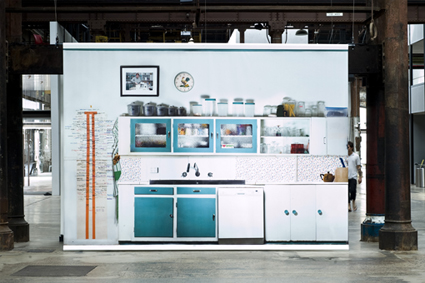 |
The Ronalds, Habits & Habitats (2010) courtesy the artists |
The curious flatness was achieved by taking hundreds of equidistant close-up photos of elements in the room, identical parameters applied to each shot. The interiors were then pieced back together using Photoshop to form the room-sized panels. This level of painstaking detail and its hyperreal results remain a dominant element in the practice of this duo, now conjugally joined, working simply as The Ronalds.
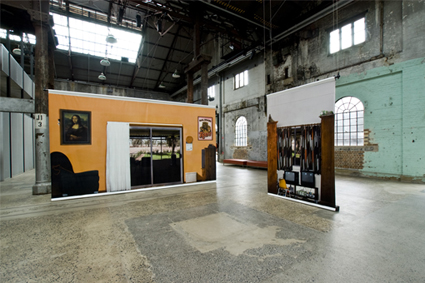 |
The Ronalds, Habits & Habitats (2010) courtesy the artists |
The power of more than one
The Ronalds met when they were both studying Photomedia at Charles Sturt University; it seems their shared aesthetic finds its roots in the lessons learned there. Shannon Ronald says, “We were taught at CSU that one photo was never enough. If you’re going to do anything, especially with a series you’ve got to prove that you can reproduce what you’re doing. So we’ve come up with ideas to make huge series.”
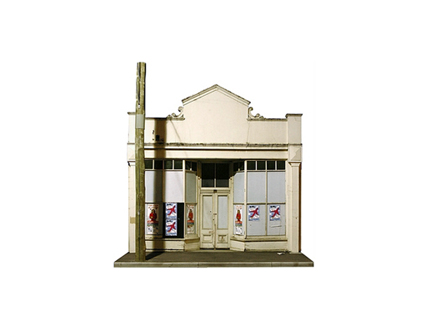 |
The Ronalds, Microcosm (2005) courtesy the artists |
Their first collaborative series was made in Launceston, where the couple moved after they finished university in 2005. In Microcosm they took photos of the facades of buildings that were proposed for heritage listing. The photos were captured at night, on long exposures, to give a unified sense of light and then cut out from the background. Exhibited as small-scale photographs the images have the preciousness of miniatures (something The Ronalds are particularly interested in), emphasising the importance of heritage and preservation.
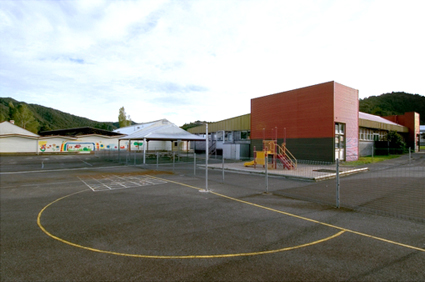 |
The Ronalds, Queenstown school, Disappearing TASMANIA (2006) courtesy the artists |
The couple then received funding to undertake the Disappearing TASMANIA project where they sought to document towns on the west coast that were in rapid decline. Patrick Ronald explains, “We both started out doing social documentaries and then we moved away from the people. We found that buildings and the things that people created were more interesting to us than going and interviewing someone. We felt that we were imposing. We didn’t really know these people: you’ve only met them for an hour or so and then you’re making judgements about their lives. But in something like Disappearing TASMANIA, we showed these totally empty, pristine classrooms just waiting for kids that probably will never turn up.” The haunting series allows the power of the place and artefact to speak for themselves.
Perhaps not surprisingly, given the exactitude of their processes, statistics often play a large part in their idea generation, and Shannon Ronald suggests this keeps the projects focused. “[We often use] data collection, which is weird but it gives us good reason and when we’re both on track we know what we’ve chosen to take photos of and it all seems to work out. We’ve got the same vision.”
This unified vision is complemented by intersecting skill sets. Patrick describes his skill as being “able to take a million photos exactly the same and Shannon’s being able to Photoshop like a wizard.” Shannon says, “I think the main reason that we work together is that when you’re editing each other, it’s bound to be a better project because you’re not just looking at it yourself and thinking this is a great project. You’ve got to convince someone else first before it goes out to the rest of the world.”
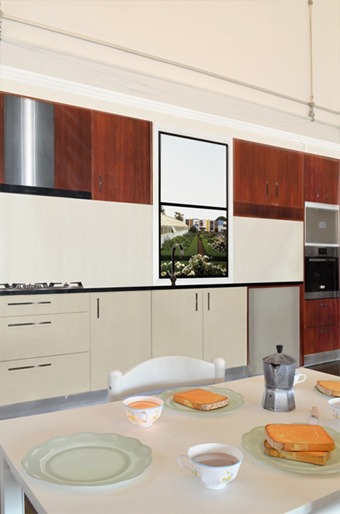 |
The Ronalds, Roxy Theatre Art Space, Leeton courtesy the artists |
From flatness to 3D to virtuality
The Ronalds’ latest projects have extended their experiments in recombinatory photographic realism into the third dimension. For their show at the Roxy Art Space in Leeton, they filled the gallery with three-dimensional photographic objects depicting a domestic dining and lounge room. As Shannon Ronald describes it, “The toast isn’t toast, it’s a toast-shaped photograph, and the plate is a plate-shaped photograph.” These are created by taking photos of each facet of an object, laying them out digitally as a flat schematic, then printing, cutting and folding them into object-shaped boxes.
For the Leeton show, they went one step further and “game-ified” the installation. Shannon, a self-confessed Nintendo freak since childhood, created a basic game where the character, Foxy, wanders around the streets of Leeton, the backgrounds borrowed from Streetview. Actions in the game, like pressing a button, activate some of the 3D photographic objects in the space, making them light up thus providing clues to the player as to where to head next in the video game. The whole gallery space was also linked to online viewers, so participants could get involved remotely.
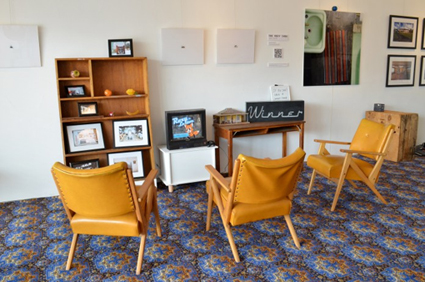 |
The Ronalds, Roxy Theatre Art Space, Leeton courtesy the artists |
This online interaction prompted Greg Pritchard (then arts development officer for Western Riverina Arts) to suggest a collaboration between himself and The Ronalds to be presented at Underbelly on Cockatoo Island in Sydney. Titled Virtual Reality, the project connected Underbelly audiences directly with a number of artists in the Riverina district via video streaming and text messages. The audience could interact, ask questions and get the artists to do things for them, with the artists at their beck and call for an eight-hour stint. It was part conversation, part art-reality TV, forging real-time connections between the urban and rural environments.
Keeping it local
The Ronalds’ next project seems like a combination of all their activities to date. Commissioned by the Wagga Wagga Regional Art Gallery to create a work celebrating its 40th birthday, the Ronalds have committed to a three-year project titled In Common. They are planning to make 300-800 miniature photographic sculptures depicting places, objects and structures from the 130 towns in the Riverina/Murrumbidgee region. They will visit all of the towns and have asked residents to nominate and vote on what should be shown. These sculptures will then be installed in the gallery emulating a map of the region, with some game-ification elements. The biggest problem for the artists now is whether they have enough time to make all these objects for the exhibition opening in 2015. The scale of the project is a mark of their commitment to the region and to documenting its true character, before perhaps it disappears.
While The Ronalds did live in Sydney for a while, they realised it suited them best to live in a more rural environment. Patrick Ronald says, “Your upbringing really effects how you become an artist and the issues you talk about. We don’t talk about our own personal lives but I guess we show our lives—this commonality between regional towns. And we’re proud to go and live in these little towns. As photographers we thought what the guys in 1970s in America did was cool, when they got in cars and drove around doing those big road trips. I guess we kind of emulate them in contemporary ways.”
Shannon concurs. “The way that Patrick and I work, I don’t think we’re missing out on anything at all by being out here, except for the fact that my internet’s a bit flat; but other than that I don’t think there’s anything holding us back…Regional people mean a lot to us because they provide us with all of our ideas. And we like it here.”
RealTime issue #118 Dec-Jan 2013 pg. web
© Gail Priest; for permission to reproduce apply to [email protected]








 back
back